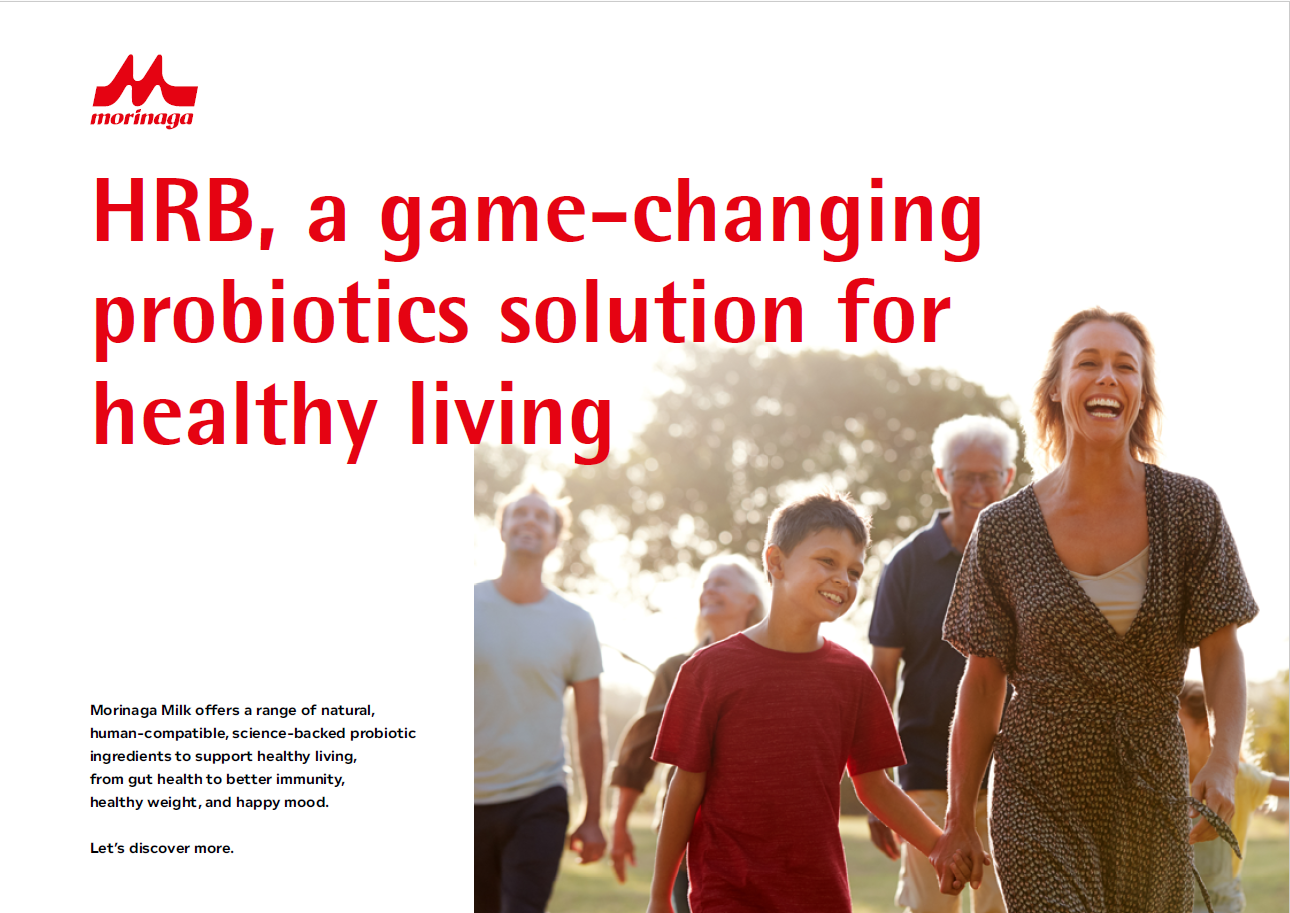
The idea of combining a probiotic and a prebiotic in a combined “synbiotic” ingredient in functional foods and supplements was first put forward in 1995, when the prebiotic concept was itself introduced. While the ensuing years have witnessed huge growth in both prebiotics and probiotics as distinct categories, synbiotics have developed far more slowly and gained nowhere near the same consumer recognition.
The picture for synbiotics over the coming years, however, is likely to be very different, thanks to a combination of scientific discovery and evolving consumer demand.

US Tariffs are shifting - will you react or anticipate?
Don’t let policy changes catch you off guard. Stay proactive with real-time data and expert analysis.
By GlobalDataThe constantly expanding study of the human microbiome supports product development across probiotics, prebiotics and postbiotics. However, the deepening understanding of how human microbiota behave, and how the human microbiome functions as a system, could be of particular significance for synbiotics because they comprise more than one co-administered, often interacting, component.
“Synbiotics are an example of the interaction in the human microbiome ecosystem and, by definition, they are more versatile than separate probiotics or prebiotics,” Daniel Ramón Vidal, Distinguished Microbiome Research Fellow, Health & Wellness, at US agri-food group ADM, explains.
On fresh terms
However, the International Scientific Association for Probiotics and Prebiotics (ISAPP) had become concerned that defining a synbiotic simply as a probiotic combined with a prebiotic was too limited given the scope for innovation in this area. Meanwhile, somewhat paradoxically, the definition was too broad, with no unified criteria determining what constitutes a synbiotic, resulting in a wide range of interpretations. ISAPP commissioned a panel of 11 scientists to devise a “consensus definition” and clarify the evidence required to show synbiotics are both safe and effective. The association’s action in itself speaks to an expectation that synbiotics could be set to grow as a category.
The new definition, published in August 2020, denotes a synbiotic to be “a mixture comprising live microorganisms and substrate(s) selectively utilised by host microorganisms that confers a health benefit on the host”. With future innovation in mind, the definition is notable for the complete absence of the terms probiotic and prebiotic.
The panel also set out two types of synbiotics. In “complementary synbiotics”, a probiotic and prebiotic are combined but work independently to confer a health benefit on the host. In “synergistic synbiotics”, the selectively utilised substrate specifically feeds the microorganisms it is being combined with.
Dr Jan Knol, senior science director for gut biology and microbiology at Danone Nutricia Research, illustrates the synergistic synbiotic idea with the simple example of a probiotic’s transit through the gastro-intestinal tract. “It may help the probiotic to survive the gastro-intestinal (GI) tract if you give each probiotic a lunchbox,” Knol says.
Aiding the probiotic’s survival of the passage through the GI tract is the first of four principal health benefits set out by Professor Glenn Gibson of the University of Reading. In fact, it was Prof. Gibson who first coined the term prebiotic back in 1995.
The remaining three benefits include giving the probiotic a more persistent effect within the host gut ecosystem; stimulating growth of indigenous components of the colonic microbiota considered to be beneficial as well as the probiotic; and health advantages that may not have ensued from the probiotic or prebiotic alone. “A good synbiotic would concurrently exploit the positive properties of both the probiotic and prebiotic ingredients,” Prof. Gibson concludes.
Both Vidal and Knol are satisfied with how the new definition meets the key objective of enabling proper, consistent evaluation of synbiotics and their health benefits going forward. “I think we need to be clear on the definitions, and then have a consensus on what we mean, and I think this definition describes it [the synbiotic] very well,” Knol says. “Also, studies will be more valuable if we really agree on what we talked about.”
Vidal adds: “The ISAPP definition is good, both from a scientific point of view but also from a commercial one. With this definition, the rules to evaluate synbiotics are clear. This is very good for companies like ADM, that base innovations and developments on clear scientific understanding.”
Applications from age to age
Babies born through C-section are at risk of not obtaining the usual transfer of beneficial bacteria (Bifidobacteriaceae) from their mothers that normally takes place with natural childbirth. With the baby’s microbiome seriously compromised because of this, Knol explains, there is a need to “kickstart the microbial ecosystem”, something a synbiotic is better suited to than a straightforward probiotic or prebiotic. “The microbiome develops much better if you get synbiotics because you give the microbe plus its food. And this helps to get the system going.”
By the same token, synbiotics can be used in infant formula and foods for young children in situations where the child’s microbiome might be depleted. Knol adds a further example could be a child in the first year of life who is taking a course of antibiotics. “You can imagine that in the first year of life, giving an antibiotic to a kid where the microbiome is still developing, this has quite a big impact,” Knol says. “So, there I think there’s a compromised microbiome that we can support with synbiotics.”
Infant and child nutrition are therefore likely to present opportunities for existing and new synbiotics producers but ADM’s Vidal suggests there will be potential to target consumers in all age brackets, particularly as understanding of the microbiome increases and consumers become more familiar with the specific properties of synbiotics.
“Infant nutrition has proved to be the most successful area to date but I have no doubt that synbiotics will also become highly relevant for other age groups and health areas, for example elderly people and focusing on immune health,” Vidal says.
It is also expected that synbiotics as a category will benefit from the growing trend towards personalised nutrition. Being composed of two elements makes synbiotics well-suited to personalisation, Knol suggests. “Definitely I think synbiotics will be the first step into personalisation, because you can adapt both the prebiotic for the person and also the probiotic of choice.”
According to ADM’s research, 49% of consumers believe every individual should have a customised approach to their diet. Furthermore, US-based specialist market research firm Hartman Group has revealed 84% of consumers of functional food and beverage supplements seek out personalised versions of these products.
“We expect the development of synbiotics to increase as consumers seek out personalised health solutions,” says Daniel Ramon Calvo, global marketing manager for B2B microbiome food and beverage solutions at ADM. “Finding synergies between probiotics, postbiotics and prebiotics will create blends that help target specific health and wellness demands. For instance, we have developed a synbiotic blend to target factors involved in both digestion and metabolism.”
With the new ISAPP definition providing a framework that can support and foster future research into synbiotics, scientists are positive about the enhanced health benefits and solutions these combination products might offer in the future. Meanwhile, the possibilities that could create for new product development will leave manufacturers of functional foods and supplements similarly upbeat.




